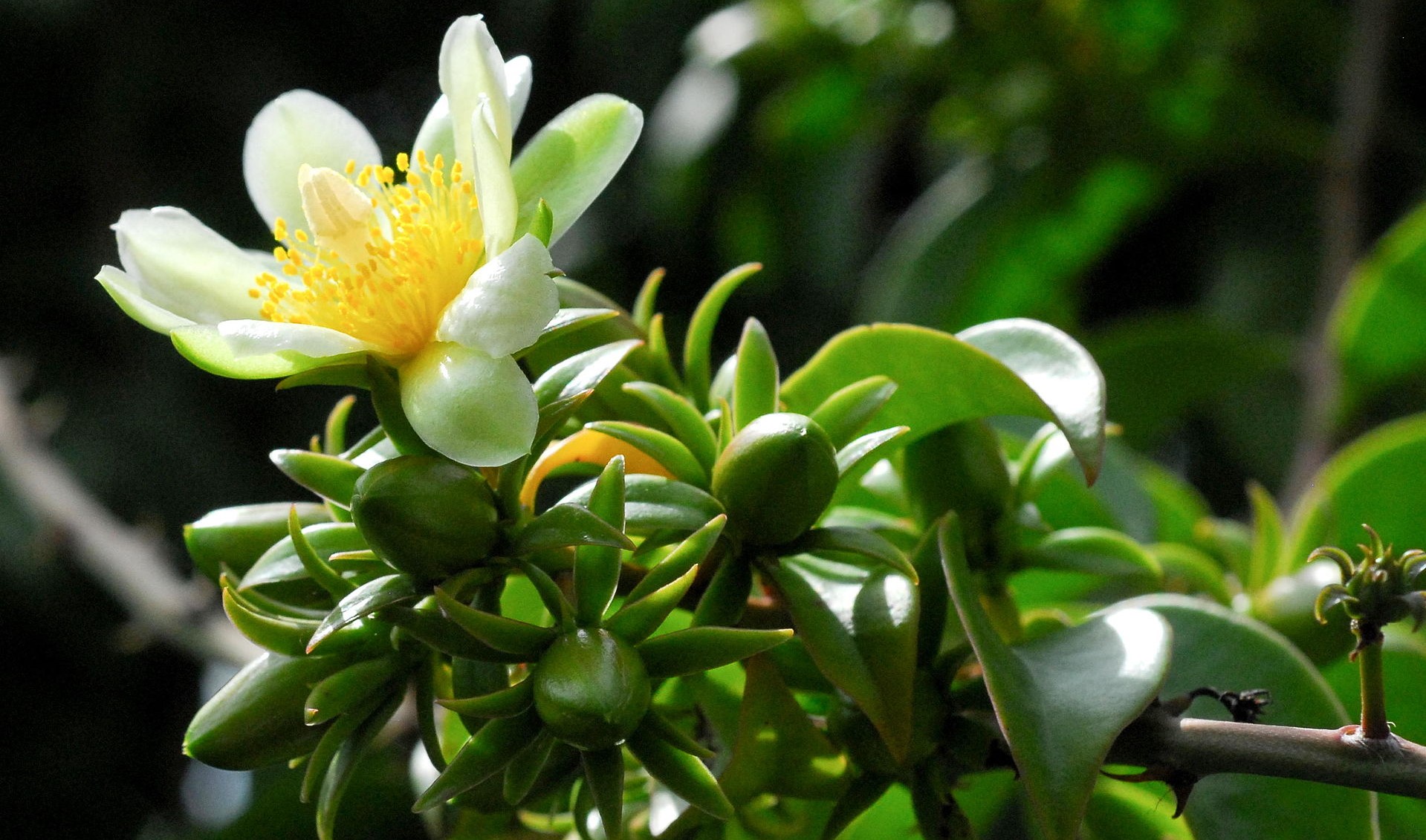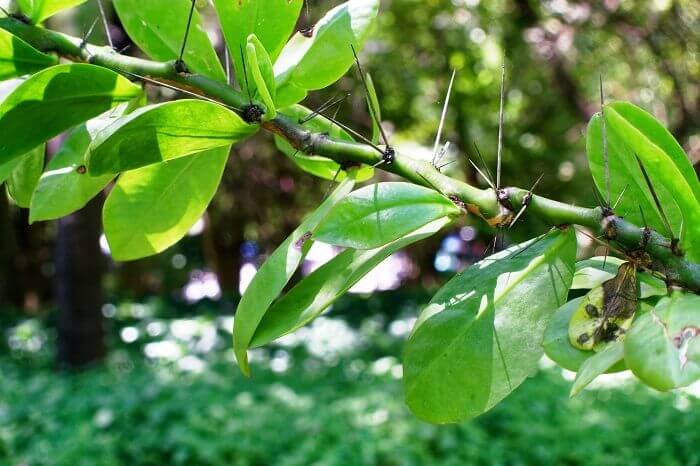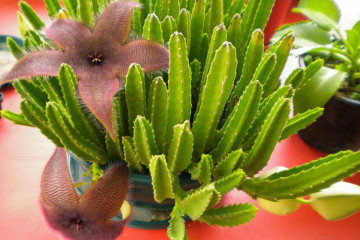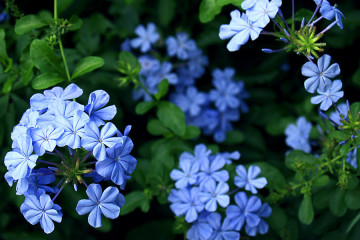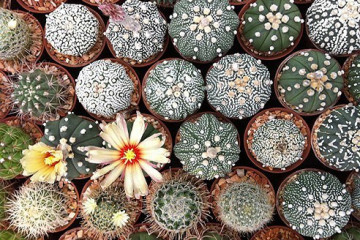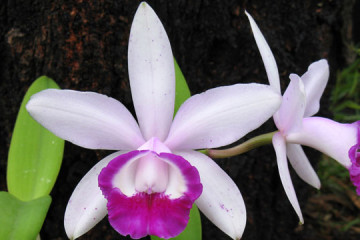Pereskia prickly: examples of plant care at home
Content:
The genus Pereskia includes 24 types of cacti. They look like trees or bushes. Among them there are those that grow like vines. When grown at home, the prickly pereskia is a compact and elegant shrub. Caring for it is not difficult, if you follow all its rules, you will be able to grow a beautiful ornamental plant.
Varieties of pereski
Pereskia is one of the most ancient types of cacti. Its peculiarity is the presence of leaf plates, in contrast to most modern cacti, in which thorns grow instead of them.
This bush got its name in honor of the French scientist N.K. de Peyresca. The name of the plant is found in the diaries of Ch. Plamier. Pereskia prickly also has other names: rose cactus or deciduous cactus. The latter option is supported by the presence of leaves and thorns growing on the stem.
Pereskia prickly
It is an evergreen perennial plant. Despite the fact that peresky prickly belongs to the Cactus family, it looks like a widely branched shrub with erect stems. Over time, they become lignified with a brown-red shiny bark. The plant has a powerful root system.
The height of this shrub can reach 10 meters. During the year, the shoots grow another 20 centimeters. On the branches of the pereskia, not only leaves grow, but also long thorns.
The leaves have an oval or ovoid shape, the length is 3-5 centimeters. They have a straight edge and a sharp tip. The shiny surface of the plate protects against excessive moisture evaporation. To care for them, you need to spray them regularly with clean water.
This plant has 17 species. In the wild, large bushes can grow from them, beautiful compact plants are obtained at home.
Pereskia Godseff
The Godseffiana pereskia has thin stems. They are covered with numerous tufts of long black spines. Oval-shaped leaves have a pointed edge. They are on strong, short petioles. The length of the leaves of the Godsef pereskia is six centimeters. Their plates have a light green color, the middle is distinguished by a rich green color. The bottom surface can be pink or purple.
Pereskia Godseffa has small flowers, they have a white or cream color. This plant can reach ten meters in height. The time when you can see how Godseff pereskia blooms comes in early summer. The flowers give off a citrus-like scent.
Perescia Aculeata
Pereskia prickly has another name - pereskii Akuleata.
Pereskia orange
This species can be up to eight meters in length. Stems lignified with olive bark. Their thickness can be 10-15 centimeters. Easily distinguishable veins can be seen on large leaf blades. Leaves grow on long stalks. Pereskia flowers with a diameter of 4-5 centimeters have an orange color. The cone-shaped fruit has a pineapple smell, but is inedible.
Home care
Caring for peresia prickly at home is not difficult, however, when growing, you need to follow certain rules.
Lighting
This plant is thermophilic. When grown at home, the most suitable place for the leafy pereski cactus will be the windowsill on the south side of the apartment. However, during a hot summer for the cactus, you will need to create a shade or move it deeper into the room. Too much exposure to direct sunlight on peres cacti can cause leaf burns. Regular airing will help protect the plant from excessive heat.
Temperature
24 degrees Celsius is the most suitable temperature for this plant during the warm period. In extreme heat, it is recommended to ventilate the Aculeata to protect it from overheating. In autumn, it will be useful for the plant to be at a temperature of 16 degrees Celsius.
At this time, he begins a period of rest. The temperature should not drop below 10 degrees. For Pereskia, such a cold snap will be disastrous.
Top dressing
When a shrub is actively growing and flowering, it needs to organize feeding. For this purpose, fertilizers that are intended for cacti can be purchased at specialized stores. It is recommended to apply top dressing at the root of the plant every 15 days. In this case, it is necessary to dilute the fertilizers twice as much as it is written in the instructions. No top dressing is required during the summer and autumn periods.
The pereskia cactus does not like organic and nitrogen-containing fertilizers. Their use can lead to the formation of rot.
Transfer
Since the presence of a powerful and developed root system is characteristic of the pereskia prickly, it will have to be transplanted sooner or later. A deep pot is suitable for her, in which there is a thick layer of drainage.
The soil for planting should include:
- humus;
- sand;
- leafy ground;
- clay-sod land.
It is important that the soil is not only fertile, but also loose.
Once the cactus is transplanted, it will receive new energy to grow.
Pruning
Pruning should be done prior to the growing season. This must be done for the correct formation of the crown.
Watering
In the summer, the plant needs watering. Its frequency depends on the state of the upper layer of the earth. If it is already starting to dry, then it is time for a new watering.
It is important to take measures so that excess moisture can leave the plant pot. If water stagnation occurs, it can cause disease and death of the plant. Such an environment is favorable for fungal infection, and can also lead to rotting of the roots of the peres cactus.
During the period when the air temperature is lowered, it is necessary to make the flow of moisture less intense. This is due to the slowdown in the life of the plant during this time.
The plant can tolerate insufficient watering. However, shiny and beautiful leaves can only be obtained by regularly spraying them with clean water.
Pereskia flowering
In spring and summer, you can see how prickly perxia blooms.The flower does not have a tubular structure, unlike most cactus species. It consists of eight wide-open lanceolate petals and has a citrus scent. During flowering, in the middle of it, you can see a lush yellow core, consisting of stamens. The flowering period is spring and summer, but it happens with quality care.
This plant, subject to the rules of cultivation, is able to please the owners with its growth and flowering. Pereskia prickly combines simplicity in care and beauty.
